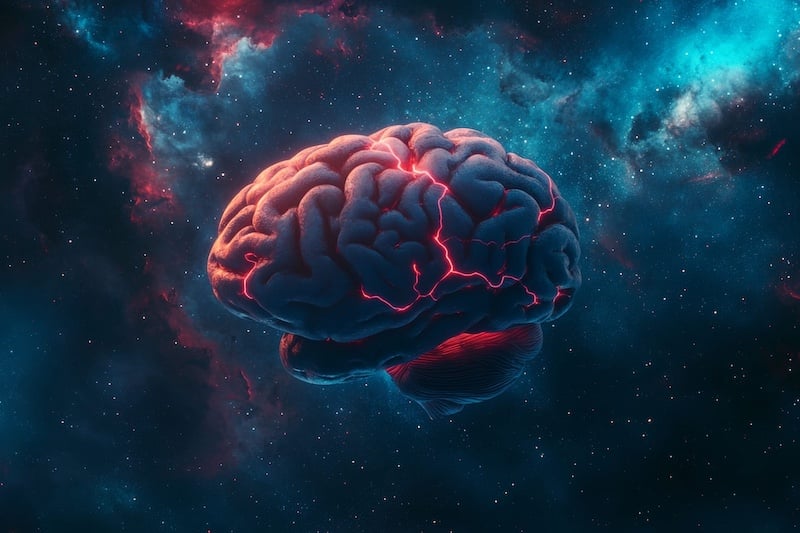By Jin Hyung Lee, PhD
Summary:
AI-enhanced EEG technology offers a promising, accessible way to detect early signs of Alzheimer’s disease—years before symptoms appear—shifting diagnostics from confirmation to prevention.
Takeaways:
- Early Detection Opportunity: Traditional imaging detects Alzheimer’s only after damage occurs; AI applied to EEG can identify subtle neural changes long before symptoms arise.
- Accessibility Advantage: EEG is portable, affordable, and already widespread—unlike costly and centralized MRI and PET scans—making early brain health assessments feasible for underserved populations.
- Actionable Insights Through AI: Platforms like LVIS NeuroMatch use AI to transform raw EEG data into early digital biomarkers, enabling proactive brain health monitoring and interventions.
Alzheimer’s may be one of the greatest public health challenges of our time—not just because it’s incurable, but because we diagnose it too late.
By 2050, more than 12 million Americans are expected to be living with Alzheimer’s disease.¹ For most, diagnosis comes too late—only after memory lapses or confusion begin to interfere with daily life. By that point, significant neurological damage has already occurred, limiting the impact of any intervention.
The current diagnostic tools—MRI, PET scans, and cognitive assessments—primarily serve one function: confirming a diagnosis after symptoms appear. These tools were not built for prevention, and certainly not for early intervention.
What if there was a way to detect Alzheimer’s before memory fades? What if clinicians could identify neural changes years before cognitive symptoms emerge?
Let’s talk about it.
From Confirmation to Prevention: A Turning Point in Brain Health
Modern neurology is at a tipping point. Advances in digital technologies are opening the door to new kinds of diagnostic insight that’s less expensive, more accessible, and able to detect neurodegenerative diseases earlier than ever before.
Historically, brain scans have been the domain of expensive structural imaging. PET scans reveal amyloid plaques and tau tangles; MRIs track brain volume. The problem? These are changes that happen after neurodegeneration is underway.
Meanwhile, EEG—an accessible, non-invasive tool that measures the brain’s electrical signals in real time—has long been overlooked for dementia diagnostics.
Thanks to artificial intelligence, that’s changing.
EEG: An Overlooked Window Into the Brain
Electroencephalography (EEG) is one of the oldest and most widely used tools in clinical neurophysiology. It works by placing electrodes on the scalp to record the brain’s electrical activity in real time. This allows clinicians to observe neural oscillations—commonly known as brain waves, which reflect underlying neural network function.
The Advantages
EEG is non-invasive, relatively low-cost, portable, and capable of capturing brain activity with millisecond precision. It doesn’t require contrast agents, radiation exposure, or large machinery like MRI or PET scanners.
For these reasons, EEG is commonplace in hospital neurology departments, outpatient clinics, and even some mobile health units.
Historically, EEG has been instrumental in diagnosing epilepsy, monitoring sleep disorders, assessing coma depth, and guiding surgical interventions in cases of severe brain injury. However, its potential for detecting neurodegenerative diseases like Alzheimer’s has been largely underappreciated.
The Setbacks
One of the primary reasons EEG hasn’t played a central role in Alzheimer’s diagnostics is that the signal abnormalities linked to early cognitive decline are subtle.
Unlike epileptiform discharges, which show up clearly on a clinical readout, the signs of incipient neurodegeneration are embedded deep within complex signal patterns. These early indicators may involve changes in connectivity between brain regions, alterations in specific frequency bands, or slight disruptions in the synchrony of neural networks. These changes are not obvious through standard visual interpretation.
Moreover, traditional EEG analysis methods are limited in scope. Clinical EEGs are often read by visual inspection, which is ideal for detecting gross abnormalities but insufficient for identifying nuanced deviations that develop gradually in the preclinical stages of Alzheimer’s.
Quantitative EEG (qEEG), which applies mathematical analysis to the raw data, has improved objectivity but still relies on predefined metrics that may not capture the full spectrum of relevant patterns.
Despite these limitations, researchers have long known that neurodegenerative diseases leave a measurable imprint on brainwave dynamics. Studies have shown that Alzheimer’s disease is associated with increased slow-wave (delta and theta) activity, decreased fast-wave (alpha and beta) activity, and disruptions in functional connectivity between brain regions.³
However, distinguishing pathological patterns from normal age-related variability requires computational tools capable of parsing vast and complex datasets.
This is precisely the challenge that artificial intelligence is now poised to address.
How AI Makes EEG Clinically Actionable
Artificial intelligence excels at finding patterns that are too complex or nuanced for the human eye. When applied to EEG datasets, AI can identify digital biomarkers: signal patterns that may indicate the very early stages of neurodegeneration—long before a patient shows symptoms.
This technical upgrade represents a fundamental shift from diagnosing Alzheimer’s based on memory loss to identifying risk based on real-time, objective brain data.
The implications are significant. With AI-enhanced EEG, clinicians may one day be able to:
● Track brain health changes over time
● Detect Alzheimer’s years earlier than with MRI
● Offer preventive strategies while the brain is still responsive
Beyond Early Alzheimer’s Diagnosis: Making Brain Health Accessible
In Alzheimer’s care, time is everything. The earlier we can identify risk, the more options we have, from lifestyle changes to clinical trials to emerging therapeutics.²
There’s also another benefit: accessibility.
MRIs and PET scans are expensive, require significant infrastructure, and are often concentrated in urban medical centers. EEG, on the other hand, is portable, affordable, and already in use in community hospitals, research labs, and outpatient clinics across the country.
For rural populations, underserved communities, or countries with limited imaging infrastructure, AI-enhanced EEG could bring brain health diagnostics within reach—no travel, non-invasive procedures, and no high costs.
A Glimpse Into the Future of Brain Health
Imagine a future where brain health checkups are part of routine care—like cholesterol panels or dental cleanings.
Mobile EEG units visit community centers. Senior wellness programs include annual neuro checks. School-based screenings help identify learning or attention challenges rooted in neural activity. Patients can monitor changes over time, rather than waiting for symptoms to trigger a workup.
This isn’t far-fetched. The technology exists. The infrastructure is within reach. What’s needed now is broader awareness and adoption.
The Shift Toward Preventative Diagnostics
At the forefront of this new diagnostic model is LVIS Corporation, a neurotechnology company focused on expanding access to early brain health assessment. Through its software platform, NeuroMatch, LVIS is working to convert raw EEG recordings into clinically meaningful insights using AI-driven algorithms trained to detect subtle neural changes.
NeuroMatch analyzes complex EEG patterns that are difficult—if not impossible—for the human eye to interpret. The system is designed to identify digital biomarkers that correlate with early signs of cognitive impairment, potentially years before conventional tools can confirm a diagnosis.
Rather than replacing MRI or PET scans, NeuroMatch complements existing diagnostics by adding a layer of temporal and functional insight that structural imaging cannot provide.
Importantly, NeuroMatch can be used with standard EEG equipment, making it scalable and deployable in settings where traditional imaging may be cost-prohibitive or logistically unfeasible.
We Don’t Have to Wait for Symptoms
The fight against Alzheimer’s has long been reactive. However, the tools we now have—especially AI-powered EEG—are facilitating a shift toward more effective prevention.
It’s time to rethink how we detect cognitive decline. Early diagnosis shouldn’t be a matter of privilege or geography. It should be standard, accessible, and focused on giving people the chance to act before symptoms take hold.
We have the science, and we have the software. What we need now is conversation and commitment.
Featured Image: Dzmitry Auramchik | Dreamstime.com
ABOUT THE AUTHOR

Jin Hyung Lee, PhD, is the founder of LVIS Corporation and an associate professor of Neurology, Bioengineering, and Neurosurgery at Stanford University. Her research focuses on the intersection of neuroscience and technology to advance non-invasive brain diagnostics.
References
- Alzheimer’s Association. 2024 Alzheimer’s Disease Facts and Figures.
- Livingston, G. et al. (2020). Dementia prevention, intervention, and care: 2020 report of the Lancet Commission. The Lancet.
- Jeong, J. (2004). EEG dynamics in patients with Alzheimer’s disease. Clinical Neurophysiology, 115(7), 1490–1505. https://doi.org/10.1016/j.clinph.2004.01.001





